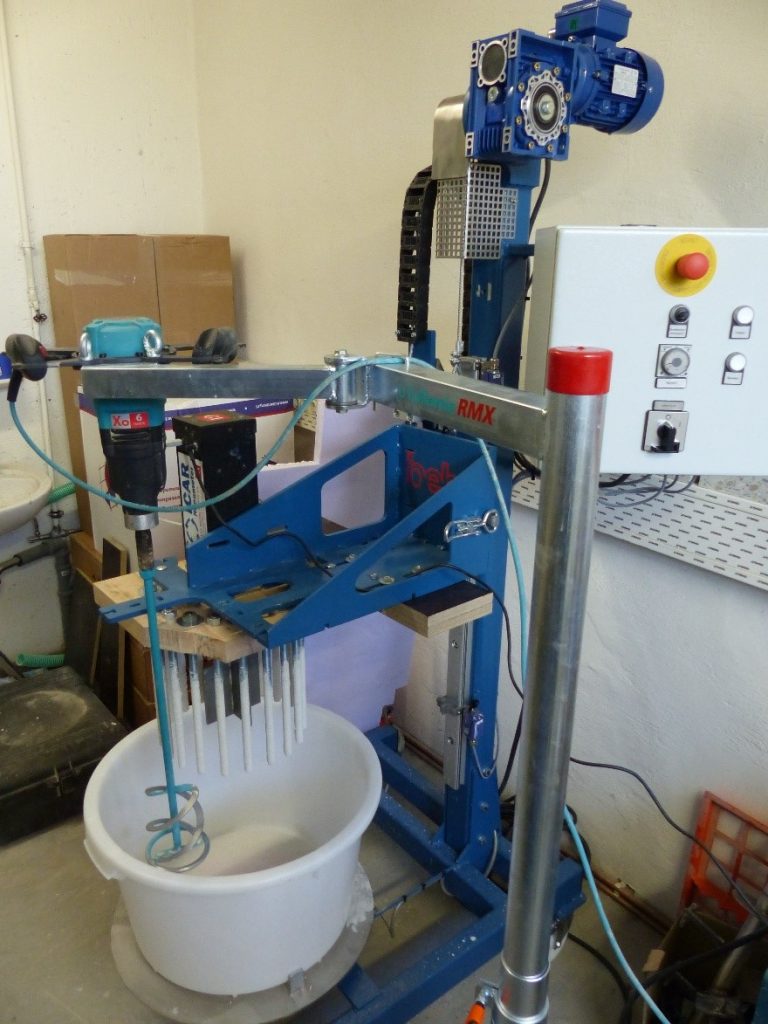5. The characterization of the rheological properties of suspension, mortar and concrete under the influence of hydration, temperature, pressure and vibration
Principal investigator(s) – PI
- Professor Dr.-Ing. Harald Garrecht
Universität Stuttgart, Institut für Werkstoffe im Bauwesen
Researcher(s) in charge – RI
- Dr.-Ing. Christian Baumert
Universität Stuttgart, Institut für Werkstoffe im Bauwesen
Subject Area
Shear-induced particle migration, Concrete Rheology, Rheometer development
Term
2018-2021
Project Identifier
Deutsche Forschungsgemeinschaft (DFG) – Projekt number 387065685
Project Description
Maintaining the homogeneity of the mixture is a prerequisite for carrying out rheological measurements. With new measurement techniques, the homogeneity during rheological measurements is to be recorded in two rheometers (MODUL II). In the known rheometers, a shear-induced segregation takes place in the pre-shear phase. In the following measuring phase, a material which is not homogeneous is thus measured. Inhomogeneities, which are based on sedimentation processes, cannot be recognized either. The IWB has a unique machine (KNIELE KKM-RT 22.5/15) that can be used as a mixer and as a rheometer and avoid inhomogeneities of the material during preshear.This research project involves the production and (repeated) determination of the rheological parameters in a single device with preshear on the level of mixing! The intensive-mixer allows the range of mixing techniques and sizes to be mapped by adapting the mixing intensity.In addition, the machine can actively homogenize the mixture in the pre-shear phase and counteract sedimentation. The structure caused by thixotropy is degraded without reducing the mixing quality.According to MODUL II, the rheological properties of granular suspensions are to be determined by two known rheometers. Particular attention is paid to the inhomogeneities caused by shear and sedimentation. Inhomogeneities in the vessels of the ICAR and the KNIELE are detected locally by means of four miniature moisture probes, via changes in the measured values for moisture and the radar-based conductivity. A mixer camera in the KNIELE makes it possible to identify the actual sheared area (shear-radius) and to take it into account during the calculation. Only with the ability to correctly measure it is possible to quantify the rheological properties of fresh concrete and to understand the correlation between the proportions of the components in the fresh state.The probes also measure the ionic conductivity of the suspension via the so-called radar-based conductivity. It is to be investigated whether changes in the fresh concrete properties can be explained by changes in the ionic conductivity over time. The connection to MODUL I is thus achieved and a further parameter for the characterization of the fresh mortar or concrete properties would thus be found.Further connections to the MODULE I and III will be carried out by the rheology-based mixture development. For packing-density optimized mix designs the demand for water and concrete additives is determined by the analysis of the mixer raw data (MODUL III). The mixing probes also supply the necessary measured values for the evaluation by the radar-measured conductivity (MODUL I). In order to be able to carry out the rheological measurements with active homogenization in the pre-shear phase under other boundary conditions, the KNIELE is also expanded. To a pressure cell, a temperature control unit, a vibration unit for vibrating concrete and a calorimeter.

Experimental setup for the rheometer ICAR to enable homogenization of the material during pre-shearing. Shear-induced particle migration is thus minimized
Publications
in: V. Mechtcherine, K. H. Khayat, E. Secrieru (Eds.), Rheology and Processing of Construction Materials, pp. 168-173 (2019)
Materials 13 (7) (2020)
Materials and Structures 53 (2020)
